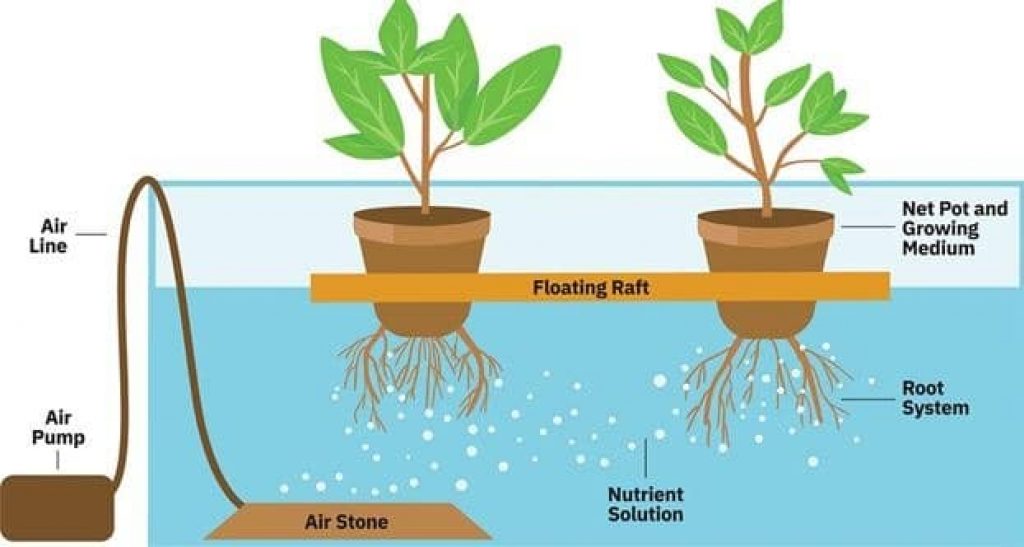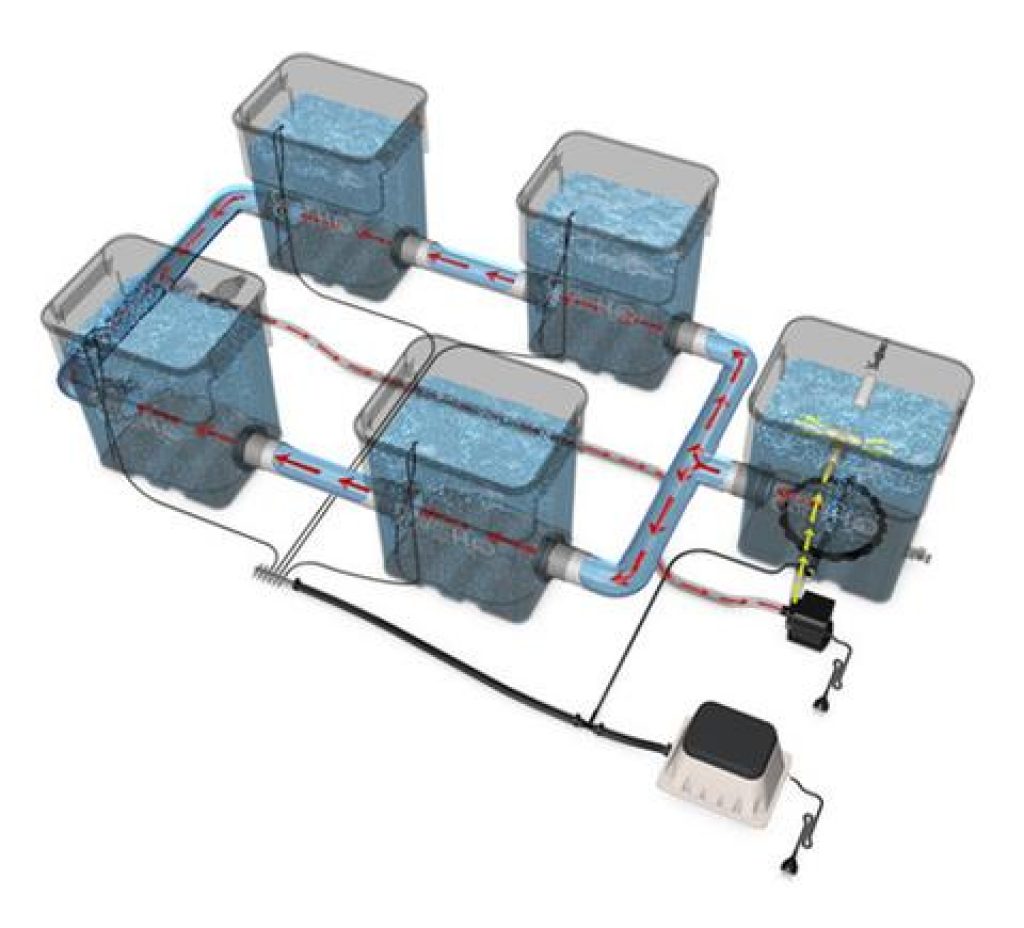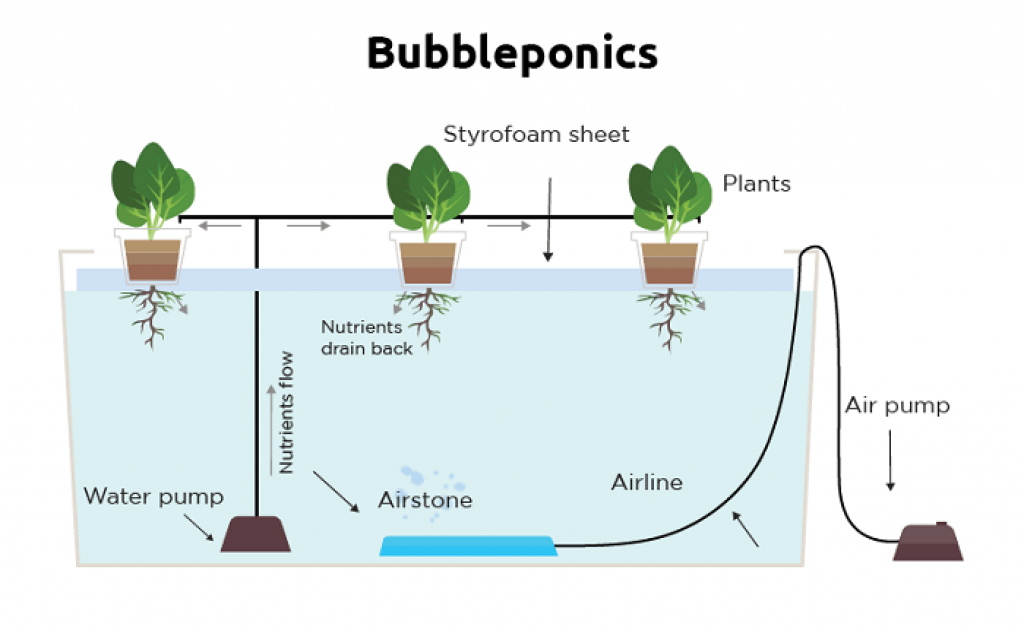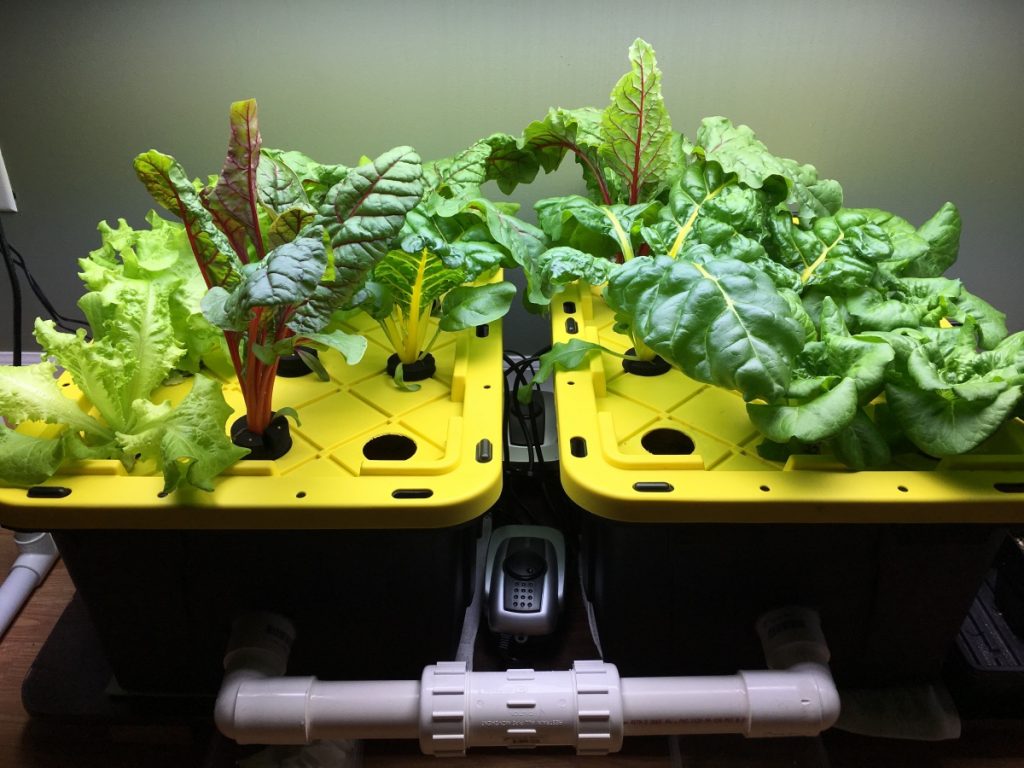You’re bound to come across the term Deep Water Culture (DWC) hydroponics when venturing down the rabbit hole that is hydroponic cultivation.
In fact, it would be fair to say that the two are virtually synonymous.
Why? You may ask. Well, simply because the Deep Water Culture method is one of the most user-friendly, low maintenance, and cost-effective systems available to hydroponic growers.
This makes it well-suited to people of all skill levels – from the nervy novice to the most masterful grower.
In saying that, Deep Water Culture Hydroponics is not entirely straightforward. There are several variations and pros and cons to the system.
This article aims to discuss DWC hydroponics by providing an overview of the method, its variations, and some other FAQs.
So without further ado, let’s get stuck in.
Table of Contents
What Is DWC Hydroponics?
To put it simply, Deep Water Culture hydroponics is a cultivation method that does not utilize substrate growing media.
In a basic DWC system, the roots are suspended over a reservoir filled with an oxygenated, nutrient-rich, water-based plant solution.
This allows the roots to receive a steady uptake of oxygen, nutrients, and water.
Air pumps and air stones then supply oxygen. These components are used in conjunction with one another to ensure that the solution is aerated enough through dissolving bubbles.
Let’s hone in on the three main elements that make up a DWC system:
1. Water
The lifeblood of a DWC system. A reservoir filled with water is used in place of soil. This reservoir contains both the nutrient-rich solution and oxygen required by the plants to grow.
2. Oxygen
Roots in DWC systems are constantly submerged in water. This means that they require sufficient oxygen to survive and grow. Without it, they will drown.
3. Nutrients
Nutrient solutions are required to supplement DWC hydroponic grows due to the presence of soil.
Deep Water Culture Variations
The variety of methods that DWC hydroponic cultivation encompasses makes it incredibly versatile and fascinating.
There are four main variations:
- Traditional Method
- Kratky Method
- Recirculating DWC
- Bubbleponics
Before we jump into these, let’s have a look at the materials required for a basic DWC hydroponic setup:
- Reservoir
- Container lid
- Net pot
- Air pump + tubing
- Airstone
- pH kit
- Growing media of your choice e.g. rockwool
- Seeds of your choice
Now let’s dive into the four different variations:
1. The Traditional Method

This is the most user-friendly DWC system.
In this method, the air pump is attached to the tubing, then the tubing to the airstone
Once that is done, the airstone is placed in a reservoir filled with water.
Nutrients are added, pH levels are adjusted, and finally, seeds are placed so that the growing process can begin.
Once germination begins to take place, the roots will make contact with the nutrient-rich water and voilà; you have the perfect conditions for optimal plant growth!
2. The Kratky Method

The Kratky method is similar to the traditional method but differs in that it does not make use of an air pump or electricity. This makes it a passive system.
You might then ask how the plants receive nutrients and oxygen.
The key here is to leave a gap between the roots and the surface of the nutrient solution. The submerged parts of the root system receive the nutrients, while the parts exposed to the air gap receive oxygen.
If you’re interested in applying this system, check out our guide to growing hydroponic basil.
3. Recirculating DWC

This DWC hydroponic method comes into play when you’re looking to increase the size of your setup.
This method consists of several buckets or containers linked by a central reservoir.
The central reservoir circulates the nutrient solution, feeding the plants in each back and returning to the reservoir.
When using this method, it’s essential to calibrate each bucket, monitor the pH, and adjust accordingly.
4. Bubbleponics

Bubbleponics, in a nutshell, is a hybrid, top-fed hydroponic technique that combines aspects of DWC and drip-fed hydroponic systems.
Your average DWC system uses an air pump to establish a constant flow of nutrients to plant roots within the reservoir.
In contrast, a bubbleponic system adds drip-feeding tubes and a water pump to the setup to dispense nutrients to the top of the roots.
The process begins by placing your plants into net pots adding in porous growing media to anchor them.
This growing media’s lightweight and porous nature provide the plants with plenty of oxygen and structural support.
Feeding tubes must then be attached to a water pump to supply the top of the plants’ roots with a continuous oxygenated, nutrient-rich solution intake.
This water then runs down the roots, feeding them while returning to the reservoir. The cycle begins once more.
Related Reading: NFT Hydroponic System (Everything you need to know)
What Plants Grow Best In A DWC Hydroponic System?

Source: thespacecowboy
Before deciding which plants you want to grow with your DWC hydroponic system, there are some critical factors to consider:
Weight
DWC systems use durable containers, but they have a weight threshold. With this in mind, choose small and lightweight crops for your setup.
Water-Friendly
The very nature of a DWC hydroponic system means that the plants you choose will be in constant contact with water. Make sure that the plants you use are partial to lots of water.
Volume
DWC systems do not lend themselves to stacking as they function on a single, horizontal plane. This means that you need to space your plants efficiently. To achieve this, make sure that you match your plant site spacing to your plant size.
Taking the above into consideration, let’s look at some plants best suited to a DWC system:
- Lettuce varieties
- Kale
- Basil
- Kale
- Collard Greens
While not the easiest to grow, avocados can also be grown using the DWC technique.
5 Benefits Of DWC Hydroponics
DWC hydroponic systems have many benefits, making the method incredibly accessible to all growers.
Let’s take a look at 5 of them now:
1. Maintenance Costs
Once set up, a DWC system will require very little maintenance, making it a cost-effective grow method.
2. Accelerated Growth
Superior uptake of nutrients and oxygen courtesy of the nutrient solution.
3. Yield
Improved nutrient and oxygen uptake means bigger and better yields in a shorter space of time.
4. Simplicity
Undoubtedly the most appealing aspect of DWC hydroponics is its simplicity. A basic DWC setup has very few moving parts. This makes it appealing to beginners.
5. Water conservation
You may stop and wonder how this even makes sense. Well, it’s a verifiable fact that hydroponic cultivation uses less water — an absolute bonus for you water-conscious people. This is because there’s no soil present to suck up and retain water.
Frequently Asked Questions
What Nutrients Should I Use For DWC hydroponics?
- Macronutrients – Nitrogen, phosphorus and potassium are all staples in this regard, and form part of your NPK ratio. Maintaining the balance between these macronutrients is vital for optimal growth. You’ll find the NPK ratio listed on every bottled of nutrient solution, so be sure to pay special attention to the ratio before making your purchase.
- Micronutrients -these include nutrients such as: boron, chloride, copper, iron manganese, zinc, etc. All of which are crucial for a healthy grow.
While it’s possible and advisable to create your own nutrient solution, you can’t go wrong with some well-known, store-bought brands.
Just make sure that whatever you purchase provides well-balanced mineral ratios and properly buffered nutrients to promote proper pH stability.
Should I Use A Singular Or Modular System?
A modular system instead of a singular system incorporates the use of multiple containers connected to a central reservoir. This allows the nutrient solution to cycle from the reservoir throughout all the plants and back to the reservoir.
Considering that this is a beginner’s guide, we would recommend starting with a singular system.
This is because they are cheaper, easier to use, and have less room for error.
Once you have become more versed in the art of DWC hydroponics, you can increase the scale of your grow and move on to using a modular system.
What Should The Temperature Of My DWC Reservoir Be?
The issue of temperature as part of a DWC hydroponic system is inevitable, particularly during indoor cultivation. This can be due to heat emitted from the lighting or the air pump.
Allow the temperature to get too high, and you will cause oxygen deprivation, inviting pathogens and root diseases to develop and spread. Conversely, letting it get too low can trick plants into thinking that seasons change, causing them to flower prematurely.
For these reasons, we advise that you keep your water temperature at 68 degrees Fahrenheit (20 degrees Celsius) or lower.
This will make your water temperature lower than your air temperature, which should typically range between 75-80F or 23.9-26.7C.
Are There Any Common Issues That A DWC System Enounters?
Absolutely. Without its downsides, no system is without its downsides, and DWC hydroponic grows are no different. Some of these common issues include:
- Temperature Regulation – as previously mentioned, maintaining a perfect temperature can be a struggle. If you neglect to do so, you’ll be creating an environment for nasty root diseases and pathogens to develop.
- Pump Malfunctions – DWC hydroponic systems are susceptible to pump malfunctions and power outages. Plants in this setup are reliant on constant oxygenation from these pumps. Reduce the oxygen levels for long enough and oxygen deprivation will set in, drowning the roots and killing off your grow.
- Nutrient and pH fluctuations – fast-growing plants can lead to rapid changes in the pH and concentration of the nutrient solution. This is particularly prevalent in small-scale systems.
- Calibration – Small-scale DWC systems are far more susceptible to over or under calibration.
Can DWC Hydroponics Increase Your Yield?
Yes, the DWC system can have a positive effect on your yield. This is due to the following reasons:
- Superior uptake of oxygen and nutrients leads to accelerated growth.
- Continuous suspension of plant roots in the nutrient solution.
- Improved water absorbtion through the roots due to aeration.
Final Thoughts
Deep Water Culture hydroponics has, without a doubt, cemented itself as one of the most popular forms of hydroponic growing today.
Its relatively low maintenance, easy-to-use, and straightforward nature make it an absolute winner for anyone across all skill levels looking to cultivate a high-quality hydroponic-based yield.
If you agree, we invite you to share your experience with us in the comment section below!

